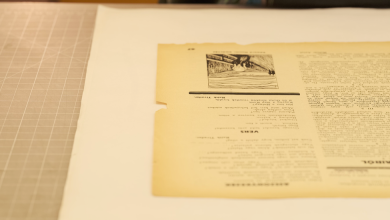When the Times Book Review Panned the Classics

In the fall of 1901, Gustavus Hindman Miller, a department store owner in Chattanooga, Tenn., was preparing to embark on a new chapter: life as a first-time author. Mr. Miller knew the impact a favorable review from The New York Times could have on the fortunes of a writer, so he wrote to the paper’s publisher, Adolph S. Ochs, in hopes of establishing some good will for his project — a more than 600-page volume titled “What’s in a Dream?”
“Before requesting the publishers to send a copy to you,” Mr. Miller wrote, “I would like to have your assurance that it will receive a friendly notice.”
Mr. Miller had reason to be wary. Even then, a review from The Times could seal the fate of a book, and, if the reviewer did not like the work in question, they could be ruthless. Reviews at the time were not signed — The Times didn’t start requiring bylines on them until 1924 — and writers could use the cloak of anonymity to be as brutal as they wished.
In his response to Mr. Miller, Mr. Ochs was sympathetic, but firm. “In such matters, as you will readily understand, I do not interfere: in fact cannot do so without totally demoralizing our organization,” he wrote. “Our high standing as to the literary character of The Times is due to the utmost freedom given for the honest expression of the opinion of the writers.” (The Times did review Mr. Miller’s book — albeit in a brief, and not very flattering, piece.)
Once reviewers began putting their names on their critiques, there was incentive for their assessments, even when negative, to be more nuanced. But that hasn’t stopped the Book Review from panning books it deemed failures — some of which have gone on to become beloved classics, curriculum staples and capital-G “Great Works” of literature.
—
These books may be renowned now, but when they first appeared in the pages of the Book Review, they were dismissed as unoriginal, weak or even unreadable.
‘Sister Carrie,’ by Theodore Dreiser
“It is a book one can very well get along without reading.” Unsigned, May 25, 1907
‘The Metropolis,’ by Upton Sinclair
“Mr. Upton Sinclair’s new book is not important, it is not literature, it is not ‘a good story.’ To say of it that it has a sneer on every page, and on many an incendiary utterance, might be giving the author too much credit. … It has all been done, and much better.” Unsigned, March 14, 1908
‘Howards End,’ by E.M. Forster
“As a social philosopher, evidently, Mr. Edward M. Forster has not yet arrived at any very positive convictions. … He evinces neither power nor inclination to come to grips with any vital human problem.” Unsigned, Feb. 19, 1911
‘Nausea,’ by Jean-Paul Sartre. Translated by Lloyd Alexander.
“Whether, from the viewpoint of literature, ‘La Nausée’ was worth translating at all is another question. It belongs to that tense-looking but really very loose type of writing, which has been popularized by many second-raters … Somewhere behind looms Dostoevsky at his worst.” Reviewed by Vladimir Nabokov, April 24, 1949
—
Some writers who would go on to be lauded by The Times for their literary prowess did not receive a warm welcome the first time they were reviewed.
‘The Voyage Out,’ by Virginia Woolf
“Aside from a certain cleverness — which, being all in one key, palls on one after going through a hundred pages of it — there is little in this offering to make it stand out from the ruck of mediocre novels which make far less literary pretension. As for the story itself, it is painfully lacking, both in coherency and narrative interest.” Unsigned, June 13, 1920
‘Other Voices, Other Rooms,’ by Truman Capote
“The story of Joel Knox did not need to be told, except to get it out of the author’s system.” Reviewed by Carlos Baker, Jan. 18, 1948
—
Other authors suffered from the weight of comparisons to their previous work.
‘Tender is the Night,’ by F. Scott Fitzgerald
“Bad news is best blurted out at once: ‘Tender Is the Night’ is a disappointment. Though it displays Mr. Fitzgerald’s most engaging qualities, it makes his weaknesses appear ineradicable, for they are present in equal measure and in undiminished form. … His new book is clever and brilliantly surfaced, but it is not the work of a wise and mature novelist.” Reviewed by J. Donald Adams, April 15, 1934
—
At times, it seemed the Book Review had it out for certain writers — including the novelist Henry James, who had a particularly rough run in the early 20th century.
‘The Golden Bowl,’ by Henry James
“In ‘The Golden Bowl’ we find, standing for subtlety, a kind of restless finicking inquisitiveness, a flutter of aimless conjecture, such as might fall to a village spinster in a ‘department store.’ … How like ancient and tedious cronies the ‘wonderfullys’ and ‘preciselys’ and ‘adequatelys’ and ‘competentlys’ turn up on these pages — as a rule in places where no self-respecting adverb would choose to be discovered.” Reviewed by H.W. Boynton, Nov. 26, 1904
‘The Outcry,’ by Henry James
“Mr. James still refuses, to be sure, to write the English language as the masters of that language not less than the plain people have been content to use it for some centuries. He still pointedly declines to apply that fastidious critical sense of his to his own tortured diction. He has done nothing to shake himself free of the horrible fascination of certain little words which have fixed his imagination with a fishy eye and creep into innumerable sentences where they are not wanted.” Unsigned, Oct. 29, 1911
—
It’s one thing to criticize an author’s work. It’s quite another to bring their face into the matter.
‘Plays: Pleasant and Unpleasant,’ by George Bernard Shaw
“A striking portrait of the author serves as frontispiece in Vol. 1. His face is long and narrow, the brow high, the eyes (it strikes one who has seen no other likeness of Shaw) shifty, the nose large, broad and blunt at the tip, the hair and beard scant. Not a handsome man, surely, and one who, except for the oddity of his dress and his views, and the unusual opportunities he has enjoyed to publicly exhibit both, would never have attracted much notice.” Unsigned, June 18, 1898
—
Even some now-beloved works of children’s literature were not spared.
‘Anne of Green Gables,’ by L.M. Montgomery
“The author undoubtedly meant her [the book’s protagonist, Anne Shirley] to be queer, but she is altogether too queer … She spoiled the author’s plan at the very outset and greatly marred a story that had in it quaint and charming possibilities. The author’s probable intention was to exhibit a unique development in this little asylum waif, but there is no real difference between the girl at the end of the story and the one at the beginning of it.” Unsigned, July 18, 1908
‘Blueberries for Sal,’ by Robert McCloskey
“The endpapers contain the kind of humorous detail which has helped make a perennial favorite of ‘Make Way for Ducklings,’ and which is lacking in the rest of this new book’s pages. The slight story and its setting, which is limited to one side or the other of a hill, scarcely seems to warrant such expansive and expensive treatment.” Reviewed by Gladys Crofoot Castor, Oct. 24, 1948
—
As their names started to be affixed to their critiques, reviewers were more inclined to offer nuanced analyses.
‘The Reef,’ by Edith Wharton
“Mrs. Wharton … is almost diabolically clever in arranging her conspiracies against the peace of mind of her characters, and against the fatal disposition of the reader to throw books down without finishing them. However, it is not by the story that she avails this time. The story is rather conspicuously a failure.” Reviewed by H.I. Brock, Nov. 24, 1912
‘Catch-22,’ by Joseph Heller
“‘Catch-22’ has much passion, comic and fervent, but it gasps for want of craft and sensibility. … Its author, Joseph Heller, is like a brilliant painter who decides to throw all the ideas in his sketchbooks onto one canvas, relying on their charm and shock to compensate for the lack of design.” Reviewed by Richard G. Stern, Oct. 22, 1961
‘Fear of Flying,’ by Erica Jong
“There is some great humor in the book, but often Isadora’s condescension and self-consciousness reduce the experience for the reader. Adrian says insightfully, ‘You and Bennett do seem to whine an awful lot.’ It is the whining that gets in the way of this otherwise energetic, bawdy, well-conceived first novel.” Reviewed by Terry Stokes, Nov. 11, 1973
—
And sometimes, the Book Review’s predictions were just plain wrong.
‘A Is for Alibi,’ by Sue Grafton
“Will the series take hold? This first book is competent enough, but not particularly original. Miss Grafton uses deliberately flat prose in an effort for realism. Kinsey Millhone, not a very interesting woman, is a cliché-ridden character representing the loneliness and alienation of her male counterparts. … It will take a very dull reader not to figure out who the villain is, though Miss Grafton does introduce a surprise en route. What is basically wrong with the book is that the writing lacks real flair. It is no better or no worse than the majority of related books, and that is about all.” Reviewed by Newgate Callendar, May 23, 1982.
Ms. Grafton would go on to write 24 more installments of her famous Kinsey Millhone series. She died in 2017 before she could complete its final installment, “Z is for Zero.”




